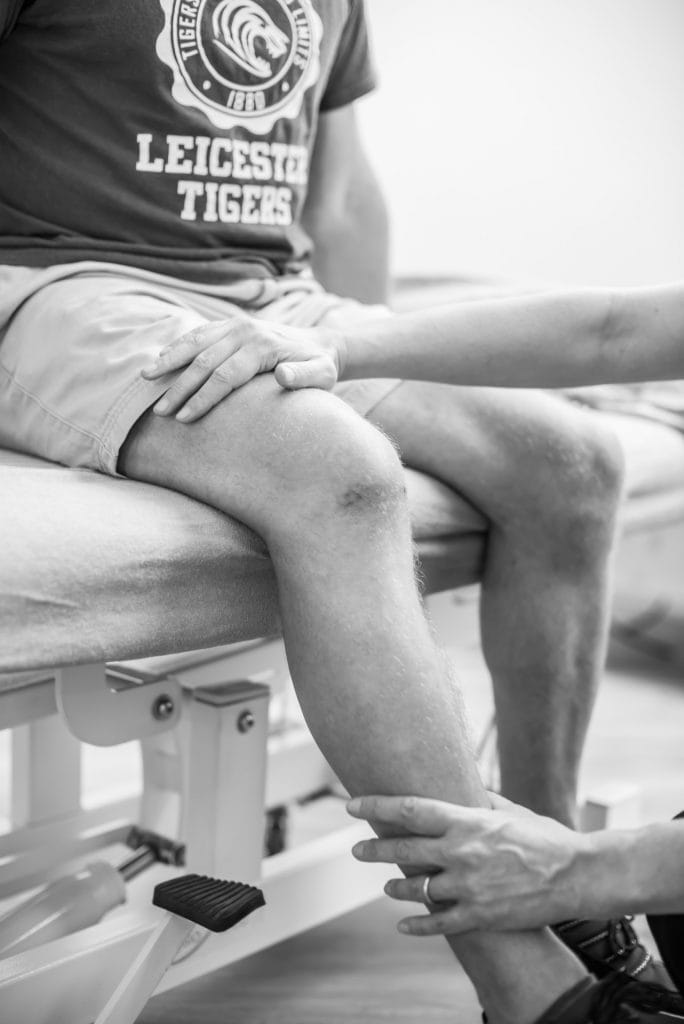DEAD LEG – What Is It? What Should I Do?
A “dead leg” occurs when the muscles at the front and sides of the thigh (the quads) take a hard, direct blow – usually during sporting activity. The result is damage to muscle fibres and small blood vessels in the area. And it can be very painful – especially in the first few hours after injury, when you’ve stopped moving around and the thigh starts to tighten and stiffen up.
As with all injuries, some dead legs will be more severe than others, but you can help your speed of recovery by using the RICE approach to treatment (Rest, Ice, Compression, Elevation) over the first few days after injury.

REST – This is as it sounds. Avoid putting too many demands on your thigh by not walking long distances and not attempting any exercises involving the injured thigh.
ICE – Ice can be applied to the painful area for 15-20 minutes at a time and as often as every 2 or 3 hours, if you wish. Always keep a layer of something between your skin and the ice when applying it (eg. A single layer of towelling).
COMPRESSION – Wrapping an elasticated bandage around the thigh can also help. The bandage can be worn during the day and left off at night. Make sure the bandage is applied snugly but not too tight (if you feel pins and needles or coldness in your lower leg, take it off and apply again slightly less firmly).
ELEVATION – Sit with your injured leg elevated for half an hour or so, whenever you get the chance (eg. Whilst watching TV or reading a book). Nowadays we advise you NOT to apply ice whilst the leg is elevated.
Seeing a physiotherapist is advisable after about a week has passed – certainly before you consider a return to sport. They will be able to advise you on how your injury is progressing and can aid the recovery process with massage, if they deem it appropriate (please see below). They can also give you a realistic time frame for return to sport/normal activity.
N.B – Receiving a massage that is too vigorous or which is given too soon after injury can, in some cases, result in long-term tissue damage (Myositis Ossificans – please see below). This can also happen if a return to heavy activity (eg. Sport) is attempted too soon, and sometimes if excessively forced stretching of the injured tissues is attempted too early in the recovery process.
MYOSITIS OSSIFICANS – This is a condition whereby the body reacts incorrectly in trying to heal the damaged muscle tissue and begins laying down bony material instead. It can occur as a response to the initial injury or as a response to mis-management during the recovery process.
Always get immediate advice from your GP if you are in any doubt about your injury, and always seek treatment from a suitably qualified medical professional, such as a Chartered Physiotherapist.
